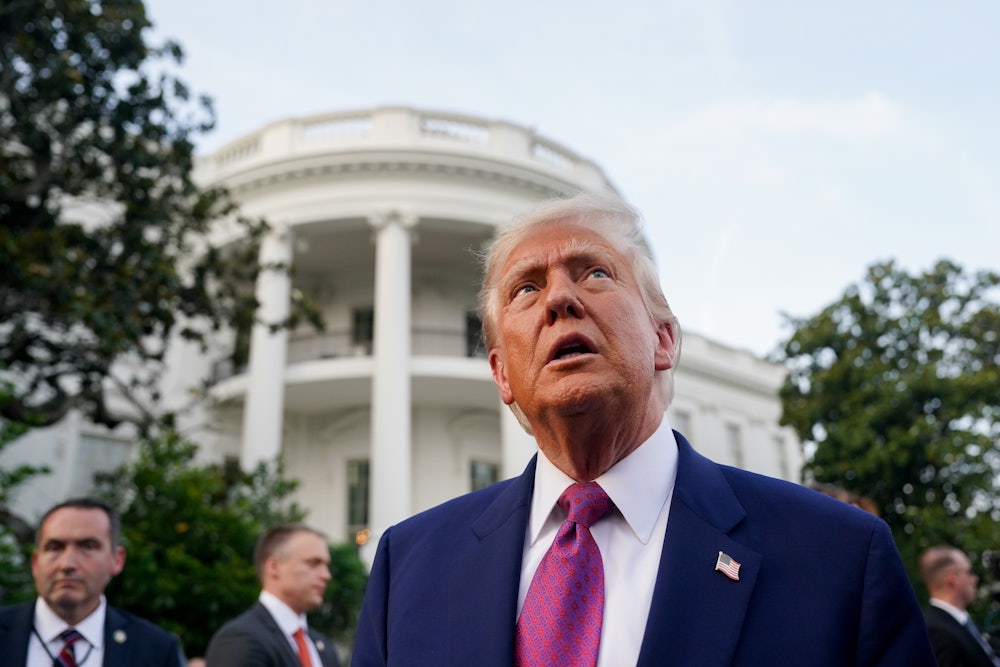Earlier this week, the Department of Justice issued a legal opinion stating that Donald Trump can abolish two national monuments in California established by the Biden administration. In theory, doing so would allow those areas—the windswept Chuckwalla National Monument in Southern California, and the verdant Sáttítla Highlands National Monument, near Oregon—to be opened up for oil and gas drilling. The Department of Interior has been eager to remove protections for these and other national monuments in the name of boosting fossil fuel extraction, as part of Trump’s “energy dominance” agenda. Environmentalists and Indigenous nations have fiercely criticized the administration’s attacks on public lands, and have fought to protect the areas, which house rare species and encompass the ancestral homelands of the Pit River Tribe and the Modoc Peoples, from development. Curiously, what primarily stands to prevent drilling there now is the drillers themselves, who have soured on a president who doesn’t understand the first thing about their business.
There may be no metric Donald Trump is more obsessed with, and understands less about, than the price of oil. For its part, the oil industry has been unimpressed by the White House’s dramatic regulatory rollbacks and gifts of federal land, which haven’t managed to outweigh their hatred of Trump’s tariffs or his ironclad commitment to lower gas prices. (The general chaos emanating from Washington hasn’t helped win industry support, either.) The majority of U.S. oil is produced using costly extraction methods such as fracking, and drillers need relatively high oil prices to break even. This is a toxic combination: As oil has been getting cheaper, costs for essential inputs like steel have gone up. Broader uncertainty about the direction of the economy, partly fueled by tariffs, has made it difficult for companies to make longer-term planning decisions and court investors. Trump’s performative abolishment of protections for national monuments won’t fix any of these problems.
The truth is that what the oil industry needs right now isn’t more land. It’s “prices high enough to make … drilling possible,” Rory Johnston, an oil market researcher, told me. “It wouldn’t matter if you doubled the availability of acres. If the prices aren’t there, they aren’t going to drill.”
Even in more optimistic times, drilling on former monument sites was a tough sell. In 2017, Trump dismantled two national monuments in Utah: Grand Staircase–Escalante and Bears Ears. Oil and gas companies didn’t bite, and Biden restored the monuments’s status after taking office. That pitch hasn’t gotten any stronger under Trump 2.0. The Federal Reserve Bank of Dallas’s most recent quarterly energy survey, released in March, featured industry executives tearing into the administration they helped elect. “The rhetoric from the current administration is not helpful,” said one respondent. “If the oil price continues to drop, we will shut in production.”
That’s exactly what’s been happening. Earlier this week, oilfield services firm Baker Hughes reported that 50 fewer oil and gas rigs are operating now than at this time last year. The Energy Information Agency’s Short-Term Energy Outlook, released Tuesday, predicts that domestic crude production will decline next year for the first time since 2021. Despite all the anger and anxiety from oil and gas executives, Trump remains committed to the contradictory and frankly impossible goals of ever-lower prices and “unleashing” record production growth. Bloomberg’s Javier Blas highlighted a remarkable exchange on this front from a few days ago between Trump and his energy secretary, former oil and gas executive Chris Wright. “Chris,” Trump says, “you are doing great.” Then he proceeds to lay into Wright:
I don’t like that the price has gone up, just a little bit, over the last few days. I was going to call and really start screaming at you. Are we OK? Nothing wrong? Right? [It’s] going to keep going down, right? Because we have inflation control.
Not long after, Trump boasted about something that—whether he knows it or not—could do the opposite of what he wants, and send oil prices skyrocketing. Contradicting his own State Department, Trump admitted in a Truth Social post that he gave Israel the green light to attack Iranian nuclear facilities. Prices of Brent crude oil, the international benchmark, were up by 8 percent Friday morning, as oil stocks jumped. Although actual supplies of oil haven’t been affected, Johnston, the oil market researcher, said on Friday morning that refiners and traders had already started buying up more “to hedge against the risk of real disruptions.” Israel continued to bombard Iran over the weekend, including with attacks on domestic fossil fuel infrastructure. So far, Israel hasn’t targeted the country’s oil export infrastructure, and there’s no evidence that Iran, in retaliation, will try to restrict trade flows through the Strait of Hormuz or target regional oil production and export infrastructure. Yet the prospect of a broader war has riled some market analysts; JP Morgan Chase warns that prices could spike to $120 per barrel and trigger a 5 percent rise in U.S. inflation. Others are more muted, and Brent crude prices had dipped below $70 per barrel by Monday morning.
Whatever happens, drillers in the United States are still probably a long way off from flooding into freshly “liberated” former national monument sites. Characteristically, the Trump administration has confused a symbolic attack on Joe Biden’s legacy for a material benefit to the fossil fuel industry. As of yet, the relatively dour fundamentals plaguing oil and gas drillers here haven’t changed. Prices are a bit higher, but steel is still expensive, and Donald Trump still doesn’t understand the oil industry.
This article has been updated.






